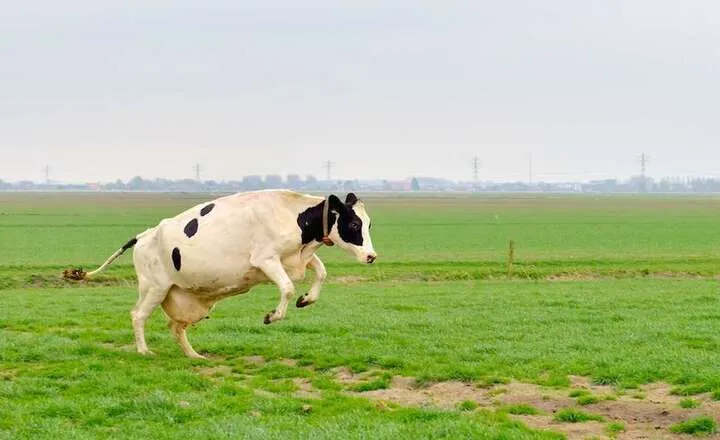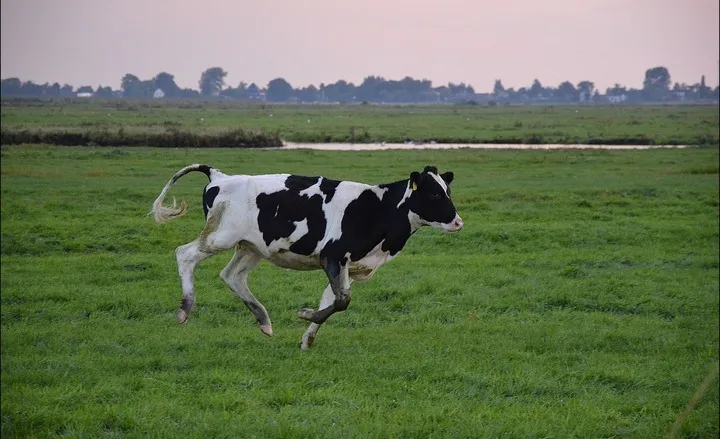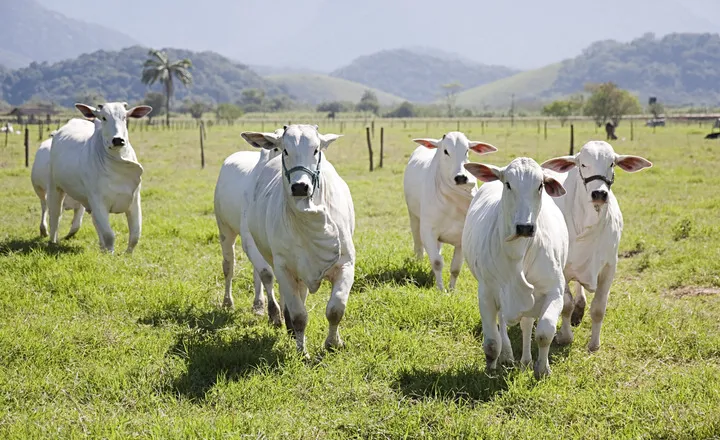How Many Cows Can A Bull Breed? The number of cows a bull can breed depends on various factors such as age, health, and breeding ability. A healthy and mature bull can successfully breed with around 25-30 cows per breeding season. Some bulls may be able to breed with more or fewer cows based on their individual characteristics.
How Many Cows Can A Bull Breed?
The number of cows a bull can service in a breeding period can vary depending on factors such as age, health, and experience. The bull: cow ratio is around 1:20-30, with mature bulls being able to cover more cows than younger bulls.
A mature bull may be able to service up to 30 cows in a breeding season, while a yearling bull may only be able to handle around 20 cows. It is important for farmers to understand this ratio in order to ensure that the herd is properly managed and all cows have the opportunity to breed successfully.
Inexperienced bulls may not be as efficient at breeding as mature bulls, so it’s important for farmers to consider this when determining how many bulls are needed for their herd.
Running too many bulls can lead to unnecessary expenses and potential conflicts among the animals, so finding the right balance based on the bull-to-cow ratio is essential for successful breeding seasons.
Experienced Bull
Bulls, age, and experience play a significant role in their ability to service cows efficiently. Experienced bulls over 2 years of age that pass breeding soundness exams are often capable of servicing a larger number of cows, with some experts suggesting numbers as high as 30 to 60 cows in a 60 to 70 day breeding period.
Inexperienced bulls below the age of 2 years are typically limited in their capacity and should only be exposed to around 15 to 20 cows during a breeding season.

While there is a general rule of thumb that suggests a bull can mate as many cows as his age, the actual number of cows a bull can successfully service is not always predictable. This variability highlights the importance of conducting breeding soundness exams to assess fertility levels accurately.
While these exams may not pinpoint bulls with low fertility, they can provide valuable insights for farmers looking to optimize their breeding programs and ensure successful reproduction within their herds.
Factors Affecting the Mating Capacity of a Bull
Factors affecting the mating capacity of a bull can vary and are influenced by various factors. Genetics play a significant role in determining the bull’s fertility rate and mating capacity.
Seminal Quality
It refers to the quality and quantity of semen produced by a bull, is influenced by both genetic and environmental factors.
The genetic composition of the bull plays a significant role in determining the quality of the semen, while environmental factors such as health, nutrition, and disorders can also impact seminal quality.
Semen quantity is measured by the number of sperm cells produced, while semen quality considers factors such as abnormal sperm cells and sperm motility.
To evaluate seminal quality, conducting a Breeding Soundness Exam (BSE) is recommended. This exam helps assess various factors affecting semen quality and can provide valuable insights into the overall reproductive health of the bull.
Understanding and monitoring seminal quality is crucial for ensuring successful breeding programs and maintaining optimal reproductive performance in cattle.
Scrotal Circumference
It is indeed an important factor in determining the reproductive capacity of a bull or buffalo. Research has shown that bulls with larger testes tend to have better seminal quality, which can result in increased sperm output and higher fertility rates.
It is interesting to note that there seems to be a threshold where further increases in scrotal circumference do not necessarily lead to additional improvements in seminal quality.

The findings from the study on 2000 bulls suggest that bulls with a scrotal circumference of around 38cm exhibit optimal seminal quality.
This information can be valuable for livestock breeders and farmers looking to maximize the breeding potential of their sires. By selecting bulls with appropriate scrotal circumference measurements, breeders can improve mating capacity and ultimately enhance reproductive success within their herds.
Genetic Factors
Hereditary play a crucial role in determining an individual’s mating capacity. Seminal quality, which refers to the health and viability of sperm, is influenced by genetic factors such as the presence of specific genes related to sperm production and motility.
Testicular consistency, which reflects the overall health and function of the testes, can be affected by genetic variations that impact hormone levels and reproductive development.
Certain recessive traits inherited from parents can also influence an individual’s mating capacity. These traits may affect fertility, reproductive health, or even physical characteristics that can impact attractiveness to potential mates.
The shape of the scrotum can be determined by genetic factors, which in turn may affect sperm production and overall reproductive success.
Nutrition
Feeding bulls high-energy diets has been shown to have detrimental effects, leading to a decrease in sperm quality and an increase in abnormalities. In contrast, providing a medium-energy and nutrient-rich diet can help improve overall health and enhance seminal quality.
It is important for breeders and farmers to carefully consider the nutritional needs of their livestock to ensure optimal reproductive performance.
By feeding bulls a balanced diet that meets their energy requirements while also providing essential nutrients, such as vitamins and minerals, it is possible to support healthy sperm production and improve fertility outcomes. Proper nutrition plays a key role in maintaining the reproductive health of breeding animals and ensuring successful breeding programs.
Libido
Libido refers to the sexual drive and eagerness of a bull to mate with a cow, which directly impacts the mating capability and overall breeding efficiency. Bulls with high libido are more likely to successfully impregnate cows, leading to increased conception rates and improved genetic diversity within the herd.
The quality of semen produced by a bull plays a significant role in determining its breeding capacity. Seminal quality, including sperm motility and morphology, directly affects fertility rates and successful insemination outcomes.
Breeders often assess both libido and seminal quality when selecting sires for artificial insemination programs or natural mating processes to ensure optimal reproductive performance and genetic advancement within their herds.
Importance of Mating Capacity
The mating capacity of a bull is crucial in the cow-calf business as it directly impacts reproductive efficiency. Investing in a sire with high mating capacity can lead to more successful impregnations within a given period, ultimately increasing productivity and profitability.
It is important to strike a balance between bull:cow ratio to optimize mating capacity without compromising fertility levels.
Utilizing new tools and tests, as well as closely observing the breeding competence of the bull, can help mitigate the risk of reproductive failure.

By monitoring and managing the mating capacity effectively, farmers can improve breeding outcomes and ensure a healthy and sustainable cow-calf operation.
Prioritizing the selection of bulls with proven mating capabilities can significantly enhance overall reproductive success in the herd.
Conclusion
The number of cows a bull can breed largely depends on factors such as age, health, and breeding efficiency. While some bulls may be able to successfully breed 25-30 cows per breeding season, others may have limitations due to physical or reproductive issues.
It is important for farmers and ranchers to carefully monitor and manage their bull-to-cow ratios to maximize breeding success and genetic diversity within their herds.
FAQs
At what age can a bull impregnate a cow?
A bull can typically impregnate a cow once it reaches sexual maturity, which is usually around 6-8 months of age.
How to tell if a bull is fertile?
The common method is through a breeding soundness examination, which includes evaluating the bull’s physical condition, reproductive organs, and semen quality.
